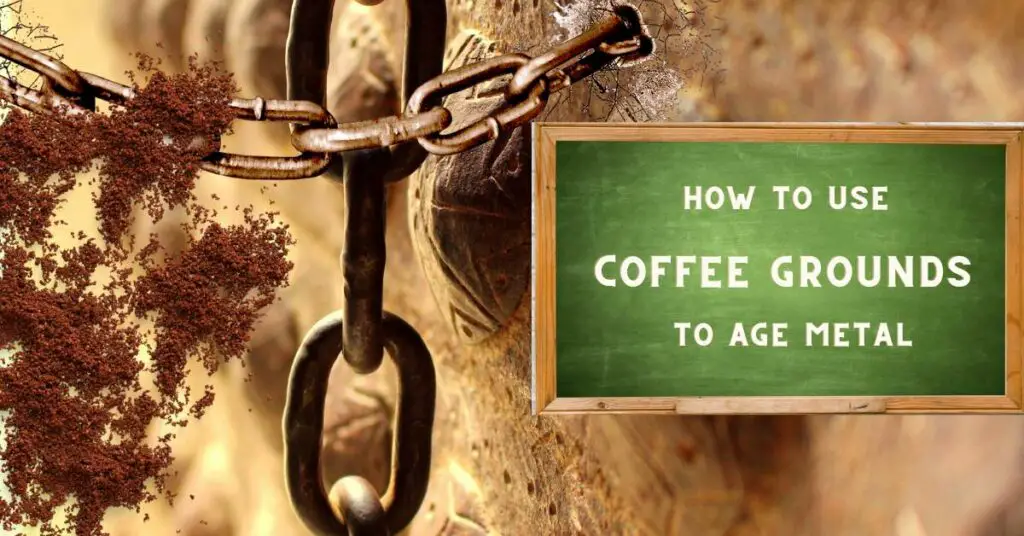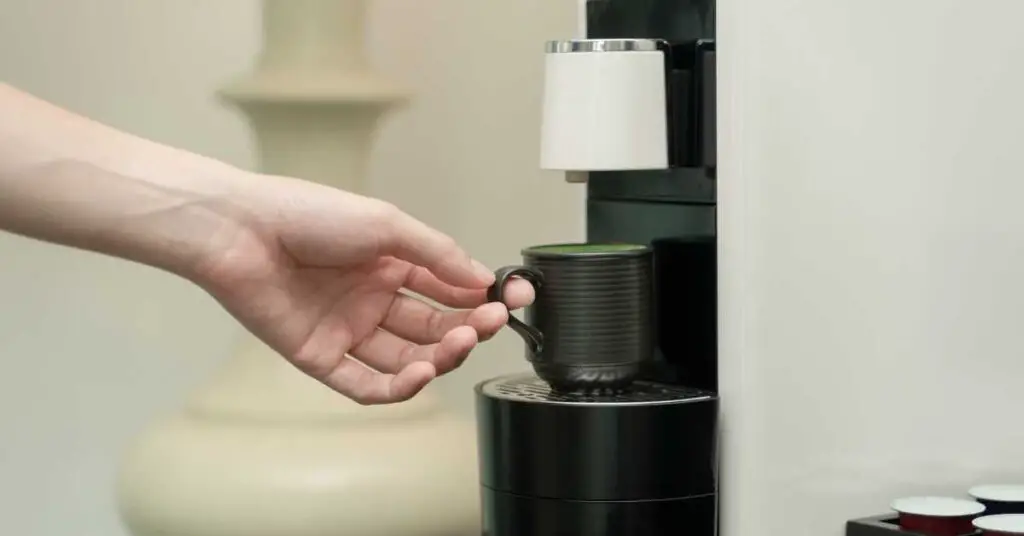Coffee lovers know the value of having a perfect espresso shot.
A single shot of espresso can be the base of many coffee-based drinks like cappuccino and latte.
A rich and creamy espresso shot is what makes the difference between a mediocre and great coffee experience.
This blog post’ll explore the importance of a perfect espresso shot and the science behind making one.
The Importance Of A Perfect Espresso Shot

A perfect espresso shot is the result of brewing finely ground coffee beans and hot water at high pressure.
The ideal espresso shot should have a thick and creamy layer of crema, a reddish-brown layer of foam that forms on top of the liquid.
This crema layer is a sign of the perfect espresso shot.
The crema layer traps the delicious aroma and flavor of the coffee, allowing the experience to be smooth and rich.
The Science Behind Making the Perfect Espresso Shot

Making the perfect espresso shot is not only an art but also a science.
The brewing process comprises several variables, including temperature, grind size, pressure, and the beans’ quality and roast level.
The water temperature should be between 195°F and 200°F.
The grind size should be fine, and the coffee should be evenly tamped with around 30 pounds of pressure.
The extraction time should be between 20 and 30 seconds.
To summarize, a perfect espresso shot results from precise brewing techniques that require attention to detail.
It takes time and patience to master these techniques, and the reward is a delicious coffee experience that only the perfect espresso shot can provide.
1. Clean Your Portafilter
When it comes to making the perfect espresso shot, cleanliness is key.
One of the most important steps in the process is to ensure that your portafilter is thoroughly cleaned before use.
This may seem like a small step, but it can significantly impact the taste and quality of your espresso shot.
Over time, residues can build up inside the portafilter.
These residues are usually made up of old coffee grounds and oils, which can affect your espresso shot’s flavor.
Before using your portafilter, make sure to remove any residual coffee grounds and oils that could affect the flavor of your shot.
To clean your portafilter, remove the basket and wipe it down with a damp cloth or paper towel.
Next, use a brush to remove any remaining coffee grounds and oils from the basket and the portafilter.
Finally, rinse the portafilter and basket with hot water to remove any remaining residues.
By cleaning your portafilter thoroughly, you can ensure that your espresso shot is as flavorful and rich as possible.
This may seem like a small detail, but it can make all the difference when it comes to serving a truly perfect espresso shot.
2. Dose correctly
When it comes to making the perfect espresso shot, dosing your coffee correctly is a crucial step that cannot be overlooked.
Dosing refers to the amount of coffee you measure and add to your portafilter, and it plays a significant role in the final taste and quality of your espresso.
Underdosing or over-dosing can result in an inconsistent shot, with an uneven and unbalanced flavor profile.
To achieve optimal dosing, you need to start by selecting the right coffee beans for your espresso shot.
Using fresh and high-quality coffee beans roasted within the last two weeks is recommended.
Next, measure your coffee grounds with precision, using a scale to ensure that you add the right amount of coffee to your portafilter.
The standard dosing for a single espresso shot is 7 grams of coffee, while a double shot is 14 grams.
Once you have measured your coffee grounds, distribute them evenly in your portafilter.
This step ensures that the water can flow evenly through the coffee grounds during brewing, leading to a balanced and rich flavor profile.
3. Distribute Your Grounds In The Portafilter

Now that you have dosed your coffee correctly, the next step in making the perfect espresso shot is to distribute your coffee grounds evenly in the portafilter.
This step is also known as coffee distribution, and it plays a critical role in ensuring consistency and balance in your espresso.
Distributing your coffee grounds evenly is essential because it directly affects how the water flows through the coffee during the brewing process.
If the coffee is not evenly distributed, the water will take the path of least resistance, resulting in uneven extraction and a sub-par espresso shot.
To distribute your coffee grounds correctly, start by tapping the side of your portafilter with your hand to settle the coffee grounds and remove any air pockets.
Then, use a coffee distribution tool, which allows you to level out the coffee evenly.
Alternatively, you can use a spoon or your finger to spread the coffee grounds evenly in the portafilter.
It is important to note that you should not over-pack or compact your coffee grounds, as this can lead to poor extraction and a bitter taste.
Instead, aim to distribute the coffee grounds evenly without applying excessive pressure.
Once you have ensured that the coffee is evenly distributed, it’s time to tamp the coffee.
Consistency Is Key: Tamp Evenly For The Perfect Espresso Shot
Now that you have successfully distributed your coffee grounds, the next crucial step in making the perfect espresso shot is to tamp the coffee.
Tamping is the act of compressing the coffee grounds evenly in the portafilter, creating a tight puck of coffee.
A consistent and even tamp is critical for producing a quality shot every time.
When the coffee is tamped evenly, the water will flow uniformly through the coffee, allowing for optimal extraction and a balanced flavor.
If the tamp is not even, you risk a channel forming, where water flows through a gap in the coffee instead of extracting evenly.
This can result in a sour or bitter taste.
There are many techniques for tamping coffee, but the most crucial factor is to apply an even amount of pressure.
As you tamp, keep an eye on the angle of the tamp. It should be pressed down evenly and perpendicular to the portafilter.
Tamp with enough force to compress the coffee without compacting it too tightly.
Achieving the perfect tamper pressure may take some practice.
But once you get the hang of it, you’ll be able to produce consistently delicious shots every time.
Remember, consistency is key when making the perfect espresso shot.
By tamping your coffee evenly each time, you can ensure the water flows through the coffee uniformly, resulting in optimal extraction and a balanced flavor.
5. Rinse Your Group Head
Once you have tamped your coffee evenly, the next step is to rinse the group head.
This step is often overlooked but is essential to creating the perfect espresso shot.
The group head is the metal piece that comes into contact with the coffee and forms a seal against the portafilter.
Over time, the group head can become clogged with coffee residue, affecting the espresso’s taste.
To rinse your group head, you will need to turn on the espresso machine briefly to flush out any remaining coffee grounds.
Start by removing the portafilter from the group head and turning on the machine for a few seconds, allowing hot water to flow through the group head.
This step ensures that the group head is clean and free of any lingering coffee grounds before you start brewing your espresso shot.
Rinsing your group head will also help to regulate water temperature, which is crucial to creating a quality espresso shot.
Water that is too hot or too cold can impact the taste of the espresso.
Rinsing the group head helps to ensure that the water is at the correct temperature before it comes into contact with the coffee.
In addition to rinsing the group head, it’s also important to clean the basket and discard the used coffee puck between shots.
This helps to remove any lingering grounds and prepares the machine for the next shot.
6. Insert The Portafilter And Start Brewing Immediately
Now that you’ve rinsed your group head, it’s time to start brewing your perfect espresso shot.
The next step is to insert the portafilter and start the brewing process immediately.
This step is vital because the longer you wait before brewing, the more the coffee will deteriorate in flavour and aroma.
When inserting the portafilter, make sure that it is properly locked into place to avoid any accidents or spills.
Once it is locked in, turn on your espresso machine and let the water heat up to the correct temperature.
It’s important to keep an eye on the temperature gauge to ensure that the water is at the optimal temperature for brewing.
As the water is heating up, you can start preparing your cups, ensuring they’re at the correct temperature and are clean.
This step will help to ensure that the espresso shot stays hot for longer and doesn’t get contaminated by any leftover coffee residue.
Once the water has reached the right temperature, it’s time to start brewing.
The ideal brewing time for a single shot of espresso is between 20-30 seconds.
As the espresso is being brewed, keep an eye on the yield and adjust the grind size or dose accordingly.
The yield is the amount of espresso that comes out of the portafilter and should be in the range of 25-30ml for a single shot.
Remember to focus on the brewing process and ensure that nothing distracts you.
Even the slightest mistake or oversight could affect the final product.
By focusing on the brewing process and following the steps accordingly, you’ll be able to create an incredible espresso shot every time.
7. Be Aware Of The Yield & Brew Time

As we discussed earlier, brewing the perfect espresso shot involves several crucial steps.
One mistake can affect the overall taste and aroma of the final product.
Among these steps, keep an eye on the yield and brew time; these two factors are crucial in producing a great tasting espresso shot.
Yield is the amount of espresso that comes out of the portafilter, and it should be between 25-30ml for a single shot.
Every coffee bean has its characteristics and requires a different amount of ground coffee to achieve the optimal yield.
Therefore, always weigh the coffee grounds to ensure consistency in the yield.
If the yield is too high or too low, it could result in an over-extracted or under-extracted espresso shot.
Brew time is equally as crucial as yield. The ideal brewing time for a single shot of espresso is between 20-30 seconds.
A shorter time would result in an under-extracted shot, while a more extended period risks over-extracting the coffee, causing the shot to be too bitter.
It is essential to pay attention to both the yield and brew time to achieve the perfect flavour and aroma of the espresso shot.
As you practice brewing more shots, you will learn how to adjust the yield and brewing time depending on the bean, roast and grind size.
8. Serve With A Smile
While it may seem obvious, it is vital to remember that your customers’ experience with your business does not end with creating a perfect espresso shot.
The way you serve it is equally crucial. Serving your customers with a smile and a positive attitude can enhance their experience and keep them coming back for more.
When it comes to serving your customers, creating an inviting and welcoming environment is essential.
Make sure your coffee shop is clean, organized, and well-staffed.
Train your staff to be friendly and courteous, and ensure they understand the importance of serving with excellence.
When serving the espresso shot, handle the cup carefully and present it visually pleasingly.
Ensure that your customers have sufficient accessories, including napkins, spoons, sugar, and stirrers.
These little details can make all the difference when creating a memorable customer experience.
Another important aspect to remember is the espresso shots’ packaging.
If you are serving to-go drinks, ensure the packaging is high quality and visually appealing.
A well-designed cup, with your logo prominently displayed, can help differentiate your business from competitors.
It can also give your customers something to remember you by, even when they are on the go.
9. Discard The Puck, Clean The Basket And Rinse The Group Head

As an experienced barista, one of the secrets to making the perfect espresso shot is knowing when and how to clean the equipment properly.
It is crucial to follow specific steps to ensure that the quality of your espresso remains consistent and impeccable.
This includes discarding the puck, cleaning the basket, and rinsing the group head.
After pulling a shot, carefully remove the portafilter from the group head, and discard the used coffee puck.
The puck should be dry and flattened with no wet or soggy spots.
This step is vital to ensure that no residual coffee oils or grounds are left behind, which could affect the taste of your next shot.
Next, use a clean cloth or brush to thoroughly wipe the basket.
Ensure that all coffee oils and residual grinds are removed before replacing it back into the portafilter.
Failure to do so can result in bitter-tasting espresso shot that does not meet your customers’ expectations.
Finally, rinse the group head with hot water to remove any remaining coffee oils.
This step is critical to prevent the buildup of coffee residues that can affect the quality and taste of your espresso shot.
After rinsing, dry the group head and portafilter thoroughly before beginning the next shot.
Discarding the puck, cleaning the basket, and rinsing the group head might seem like little things, but they play an integral role in consistently producing the perfect espresso shot.
By caring for the equipment and following the proper cleaning process, you can produce a high-quality coffee that will keep your customers coming back for more.
Conclusion
The secrets behind the perfect espresso shot don’t just lie in the cleanliness and maintenance of equipment but also in the coffee beans used and the skill and knowledge of the barista.
Achieving a perfect shot takes time, practice, and an understanding of the science behind it.
Firstly, the coffee beans must be freshly roasted, ground to the correct size, and precisely measured.
The quality of beans affects the coffee’s flavor, aroma, and crema.
It is also essential to have a burr grinder to ensure that the beans are ground uniformly.
Secondly, the water used must be at the correct temperature and pressure.
The ideal water temperature is between 195 and 205 degrees Fahrenheit, and water pressure should be around nine bars.
The water quality should be clean and free from impurities, as even the smallest amount of contaminants can affect the taste of the coffee.
Thirdly, the skill and expertise of the barista play an integral role in making a perfect shot.
They must deeply understand the coffee-making process, including the science behind it.
From dosing the coffee to tamping and timing the shot, all of these steps require precision and technique.
More Articles: DIY coffee roasting at home: A step-by-step guide.
Discovering the world’s strongest coffees: Can you handle them?






